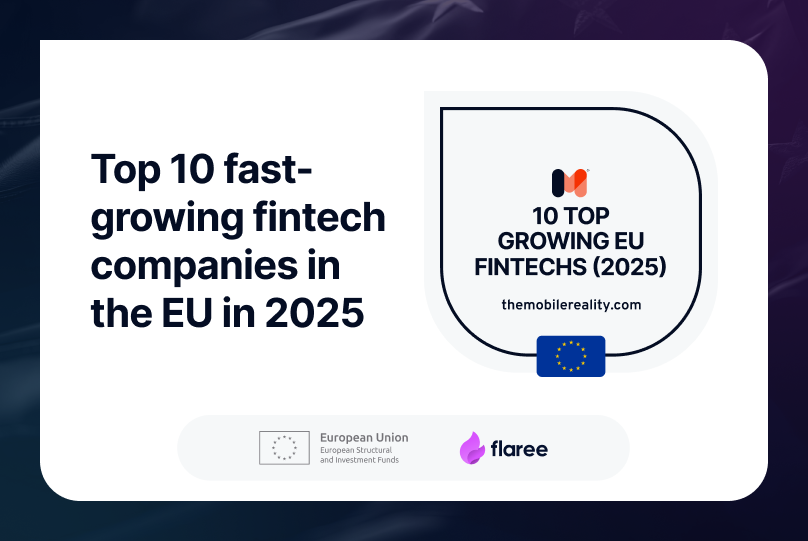Introduction
Fintech is a very applied story that permeates all spheres of life. And our main task is to make complex things simple. If we recall people's associations with financial transactions 5-10 years ago, it was something complicated in the mass consciousness. Now, this is the absolute norm. But there are still a huge number of things that are just becoming available to most people with time. The percentage of people who began to treat finance more meaningfully is increasing, people began to invest money. The design of fintech products has a unique ability to turn fintech services into something useful, attractive, and even fascinating. Fintech is accessible, and convenient and transforms the relationship between service providers and their customers. So how do you use the power of design to strengthen and build sustainable loyalty?
The are 5 Principles of Digital Products Design for the Fintech Market
1. Creating a Mechanism that Turns Money and Emotions in one direction
There is a definite difference between money and emotions. When it comes to product design, it is important to use it well to connect these two aspects. It is important to look at how people see moments, instead of trying to analyze their logical reaction to a specific situation.
2. Creating a convincing copy
Developers of fintech products must take into account many factors when developing their applications. By focusing on users' goals, they should also think about how to educate and motivate users. It's ideal to focus on how to educate users and create value through the interface.
In finance, jargon is a double-edged weapon. It would be difficult to use key performance indicators and attract users' attention to them. No matter how necessary it may seem, jargons have a negative connotation, at least for ordinary users. It scares and hinders the building of positive relationships. So instead of allowing financial language to widen the relationship gap, simplify the language just like Monese and Monzo did with their products.
By hiring the best copywriters, these companies pay attention to both emotionality and tonality. They then offer users the relevant parts of their products.
3. Using Positive Friction to prevent Impulsive decisions
It is expected that the technology will allow for informal learning without the need for sleight of hand. It is for this reason that most fintech products prefer a frictionless design. Users of fintech products should be able to make informed decisions about their money. This is where positive friction occurs.
If you look at Monzo, their gambling blocking is a deliberate function aimed at deterring the actions of people suffering from addiction. This creates a moment for self-reflection to avoid financial losses due to mental health problems.
4. Gamification for Motivation
Gamification helps users feel more engaged and motivated to make financial decisions. Creating products designed to evoke positive emotions is the key to achieving financial goals. This helps users form healthy financial habits by encouraging them to save and invest. It also encourages good behavior.
5. Improving the financial outlook with visualization
If the user wants to see a lot of statistics and charts, the presentation should be designed in such a way that he has the feeling that he is getting a good deal.
Most fintech products have cost management functions that usually lack one thing. Instead of creating cool charts and analytical data, these tools tend to clutter users' views with the information they can't figure out. The leaders of Monese and Monzo agree that a universal approach is not suitable for everyone. In addition, it is known that bank transaction data from time to time contain inaccurate values.
Despite the fact that the automatic categorization system sounds pretty good, its accuracy still depends on user input. This makes it unsuitable for some products. For example, some products rely on user input to identify trend lines.
Conclusion
To make Fintech products more user-friendly, start by understanding users' perspectives and developing solutions designed to meet their specific needs. This helps designers avoid creating products that are too logical and predictable.
Fintech and Financial Software Development Insights
Are you intrigued by the rapidly evolving world of fintech and financial software development? At Mobile Reality, we take pride in our extensive knowledge and experience in this dynamic field. We navigate complex challenges, implement innovative strategies, and develop groundbreaking solutions in fintech. Our carefully curated selection of articles offers in-depth perspectives on key aspects of fintech and financial software development:
- Top Fintech Conferences That You Cannot Miss in 2025
- Leveraging Blockchain for Fintech: A Look Ahead to 2025
- Top 5 Wealth Management Solutions in 2025
- Top 10 Best Investment Apps for Business in the US
- AML KYC Simplified: Best Practices for Fintech Apps
- Building an MVP for fintech and modern banking
- What is Open API Banking and How Does it Work?
- Fintech Week NYC: Key Trends and Transformations
- Top Investment Apps in Europe in 2024
- TOP 10 KYC & AML software companies in 2023
- The Future of Financial Services: AI for Fintech
- Explore the Future of Fintech App Development in 2025
Explore these comprehensive resources to deepen your understanding of the fintech sector. If you have any questions or are interested in exploring partnership opportunities in fintech software development, please contact our sales team. For those aspiring to join our innovative team, visit our careers page to submit your CV. Join us in driving the future of fintech and financial software development!





